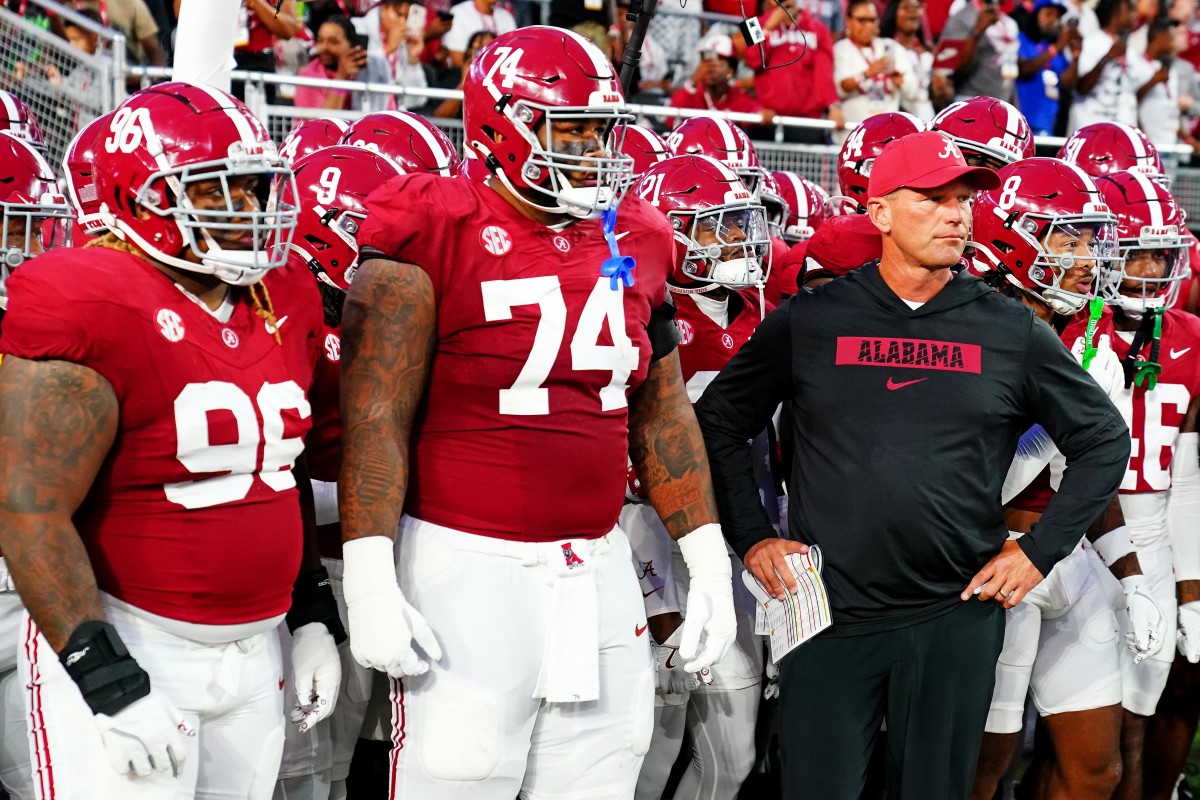Alabama Football’s 2025 Recruiting Class Faces Unforeseen Challenges Amidst Coaching Transition and In-State Competition
The Alabama Crimson Tide football program, under the leadership of new head coach Kalen DeBoer, entered the 2025 recruiting cycle with high expectations. The retirement of legendary coach Nick Saban marked the beginning of a new era, and DeBoer was tasked with maintaining Alabama’s dominance in college football recruiting. However, the transition has not been without its challenges. Several high-profile decommitments and increased competition from in-state rival Auburn have raised questions about Alabama’s recruiting strategy and future prospects.
One of the most significant setbacks occurred when five-star offensive tackle Ty Haywood decommitted from Alabama. Haywood had been a cornerstone of the Crimson Tide’s offensive line class, and his decision to reopen his recruitment was a blow to Alabama’s efforts to bolster its front seven. His departure left a noticeable gap in the class, prompting the coaching staff to intensify their efforts to secure commitments from other top-tier offensive linemen.
Adding to the challenges, four-star interior offensive lineman Mason Short also decommitted from Alabama. Short had been committed to the program since April, but the coaching changes following Saban’s retirement led him to reconsider his options. His decision to reopen his recruitment further depleted Alabama’s offensive line class, highlighting the difficulties the program faced in maintaining commitments during a period of transition.
The wide receiver position also saw significant turnover. Five-star wide receiver Jaime Ffrench, who had been committed to Alabama since July, announced his decommitment following the coaching changes. Ffrench’s departure was particularly impactful, as he was considered one of the top wide receiver prospects in the country. His decision to reopen his recruitment underscored the challenges Alabama faced in retaining commitments during a period of uncertainty.
In addition to the decommitments, Alabama also experienced flips from key recruits. Athlete Derick Smith, who had committed to Alabama in March, announced his decision to flip to Auburn. Smith’s versatility and athleticism made him a valuable prospect, and his commitment to Auburn added to the growing concerns about Alabama’s standing in the state.
The loss of these recruits has had a ripple effect on Alabama’s recruiting class. The program has seen a decline in its national ranking, and the coaching staff has been forced to adjust their strategy to address the gaps left by these departures. The challenges faced by Alabama highlight the complexities of maintaining a top-tier recruiting class during a period of transition.
Compounding Alabama’s recruiting challenges is the rise of in-state rival Auburn. Under head coach Hugh Freeze, Auburn has made significant strides in securing commitments from top recruits in Alabama. The Tigers signed 10 of the top 12 in-state recruits, a testament to Freeze’s emphasis on locking down local talent. This shift in recruiting dynamics has put additional pressure on Alabama to adapt its strategy and reclaim its position as the dominant program in the state.
Despite these setbacks, Alabama remains a formidable force in college football recruiting. The program still boasts a strong recruiting class, with several high-profile commitments. However, the recent challenges underscore the importance of stability and continuity in maintaining a top-tier recruiting program. As Alabama moves forward under DeBoer’s leadership, the program will need to navigate these challenges and rebuild its recruiting momentum to ensure continued success on the field.
In conclusion, the 2025 recruiting cycle has presented unforeseen challenges for Alabama football. The combination of key decommitments, flips to rival programs, and increased competition from in-state rivals has tested the program’s resilience. While Alabama continues to be a powerhouse in college football, these developments serve as a reminder of the dynamic nature of college football recruiting and the importance of adaptability in maintaining success.



